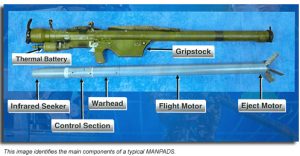DAILY CURRENT AFFAIRS (MARCH 15, 2022)
THE POLITY AND GOVERNANCE
1.THE CENTRE RELEASES GRANT-IN-AID TO STATES FOR RURAL LOCAL BODIES
THE CONTEXT: According to data released by the Department of Expenditure, Ministry of Finance Rs 1,112.7 crore has been released to Bihar, Rs 473.9 crore to Karnataka and Rs 634.6 crore to West Bengal.
THE EXPLANATION:
- The local body grants are meant to ensure additional funds to rural local bodies over and above the funds allocated by the Centre and the State for sanitation and drinking water under the Centrally Sponsored Schemes.
- The 15th Finance Commission recommended tied grants are released to rural local bodies (RLBs) on the recommendations of the Department of Drinking Water & Sanitation for making improvements on two critical services namely,
- Sanitation and maintenance of open-defecation free (ODF) status
- supply of drinking water, rainwater harvesting and water recycling.
- Untied grants are released to the rural local bodies on the recommendations of the Ministry of Panchayati Raj after satisfying the conditions stipulated by the 15th Finance Commission
| WHAT IS TIED GRANT AND UNTIED GRANT?
Out of the total grant-in-aid earmarked for Panchayati Raj institutions, 60 per cent is earmarked for national priorities like drinking water supply, rainwater harvesting and sanitation (referred as tied grants), while 40 per cent is untied and is to be utilised at the discretion of the Panchayati Raj institutions for location-specific felt needs. |
- In order to be eligible for grants during the years 2021-22 and 2022-23, the rural local bodies have to fulfill certain conditions.
- These conditions have been stipulated to enhance transparency, regular conduct of elections to the local bodies and preparation of annual development plans by the local bodies.
- To receive both tied and untied grants, it is mandatory to prepare and make available online, in the public domain by at least 25 percent of the local bodies, both provisional accounts of the previous year and the audited accounts of the year before the previous year. Moreover, the accounts must be uploaded on eGramswaraj and Audit Online portal. The grant is released only to those local bodies which are duly elected.
THE ECONOMY
2. INDIA TO ISSUE GREEN BONDS AS COUNTRY SHIFTS TO LOW-CARBON ECONOMY
THE CONTEXT: According to the report, India will issue at least 240 billion rupees ($3.3 billion) in sovereign green bonds as the country marks a shift towards a low-carbon economy.
THE EXPLANATION:
- The debut sale may take place in the first half of the fiscal year that starts on April 1, and a decision to sell more green debt will depend on the response to the initial issuance.
- The South Asian country’s maiden foray into the green bond space comes as it plans to fund renewable energy projects that will help meet its goal of net-zero emissions by 2070.
- The planned issuance comes amid a global boom in sustainable investments. India is the world’s third-biggest emitter of greenhouse gases and plans to more than quadruple its renewable power generation capacity by 2030.
- Indian renewable energy companies raised debt worth 17.6 billion rupees in February 2021 according to the report.
Value Addition:
What are Green Bonds?
A green bond is a type of fixed-income instrument that is specifically earmarked to raise money for climate and environmental projects. These bonds are typically asset-linked and backed by the issuing entity’s balance sheet, so they usually carry the same credit rating as their issuers’ other debt obligations.
How Are Green Bonds Different From Climate Bonds?
“Green bonds” and “climate bonds” are sometimes used interchangeably, but some authorities use the latter term specifically for projects focusing on reducing carbon emissions or alleviating the effects of climate change. The Climate Bonds Initiative is an organization that seeks to establish a standard for certifying climate bonds.
Points to remember:
- The World Bank is a major issuer of green bonds. It has issued 164 such bonds since 2008, worth a combined $14.4 billion.
- The phrase “green bond” is sometimes used interchangeably with climate bonds or sustainable bonds.
- In 2020, the total issuance of green bonds was worth almost $270 billion, according to the Climate Bond Initiative. The cumulative issuance since 2015 is over $1 trillion.
3. THYSANOLAENA MAXIMA-THE BROOM GRASS
THE CONTEXT: Karbi Anglong district of Assam is the leading producer of broom grass in India, commonly known as Jharu has been contributing to the local economy since many years.
THE EXPLANATION:
- Broom grass (Thysanolaena maxima) has emerged as the most widely cultivated cash crop in the hills of the State.
- Commonly known as Jharu, it is grown in the Jhum fallow season by people of the Tiwa, Karbi and Khasi communities as a mixed crop for its inflorescence used for making brooms.
- It also provides fuel and fodder during the lean period.
- Karbi Anglong is the largest producer of brooms in India. Cultivation of broom grass is comparatively easy and requires only small financial inputs.
- It can be grown on marginal lands, wasteland and in Jhum fallow land. It grows well on a wide range of soils from sandy loam to clay loam.
- The planting can be done by seeds or rhizomes. The harvesting starts from February and continues till March-end. About 90% of the produce is sold during March and April. The rest is used by the farmers themselves.
- Broom grass cultivation has the potential to generate local employment and can be used to enhance rural income.
- It constitutes a major source of income for Assamese families in the business. This year, the villagers sold dried broom grass for ₹90 a kg on an average.
THE ENVIRONMENT AND ECOLOGY
4. SYLLIPSIMOPODI BIDENI: PRIMORDIAL OCTOPUS HAD TEN ARMS
THE CONTEXT: Scientists unearthed a fossil at Central Montana of a species named Syllipsimopodi bideni represents the oldest-known relative of today’s octopuses and boasts 10 arms, with two twice as long as the other eight.
THE EXPLANATION:
- According to Scientists, the fossil greatly changes our understanding of how octopuses evolved and indicates that the earliest members of the group superficially resembled living squids.
- The fossil, so well preserved that it reveals two parallel rows of suckers up and down each arm, dates to about 328 million years ago.
- Octopuses, ranging from the one-inch (2.5 cm) star-sucker pygmy octopus to the 30-foot (9-meter) giant Pacific octopus, are known for their otherworldly appearance, with bulbous heads, large eyes and beak-like jaws.
Syllipsimopodi Bideni
- Syllipsimopodi, about 4-3/4 inches (12 cm) long, had a torpedo-shaped body and squid-like appearance though it was not closely related to squids, which appeared much later. It also is the oldest-known creature with suckers, which enable the arms to better grasp prey and other objects.
- Syllipsimopodi pushes back by 82 million years the origins of a group called vampyropods that includes today’s octopuses and the world’s lone species of vampire squid, a misnomer because it is not a squid but rather an octopus cousin.
- They are adept at camouflage – changing colors and even textures to mimic their surroundings – and can maneuver their bodies into tiny cracks and crevices. They also are capable of tool use and problem-solving.
- Syllipsimopodi prowled the warm waters of a tropical bay – Montana at the time was situated close to the equator. It may have been a mid-level predator, eating smaller invertebrates.
- It is lived during the Carboniferous Period, a time of important evolutionary changes in other marine life that included the appearance of more modern-looking fishes.
THE SCIENCE AND TECHNOLOGY
5. RADIOCARBON DATING TO IDENTIFY FORGED PAINTINGS
THE CONTEXT: Radiocarbon dating has unmasked two forged paintings in France — probably the first time the technique has been used in a police investigation. The paintings were supposedly impressionist and pointillist works from around the early twentieth century.
THE EXPLANATION:
- A team led by heritage scientist Lucile Beck at the University of Paris-Saclay used radiocarbon levels in the fibres of their canvases to date them to sometime within the past 70 years.
- The use of radiocarbon dating is gaining steam in the forensic analysis of artwork, thanks to advances that require smaller samples than ever before. Removing tinier samples from artwork is more palatable to auction houses, museums and owners of paintings.
- Researchers typically use imaging and chemical analysis to sniff out art forgeries. These methods can peer beneath brushstrokes to see how a painting’s materials have aged, but can’t conclusively nail down a painting’s date.
What is radiocarbon Dating?
Radiocarbon dating or carbon dating or carbon-14 dating is a method for determining the age of an object containing organic material by using the properties of radiocarbon, a radioactive isotope of carbon. Unstable carbon-14 gradually decays to carbon-12 at a steady rate
How does it work?
- Radiocarbon dating works by comparing the three different isotopes of carbon. Isotopes of a particular element have the same number of protons in their nucleus but different numbers of neutrons. This means that although they are very similar chemically, they have different masses.
- The total mass of the isotope is indicated by the numerical superscript. While the lighter isotopes 12C and 13C are stable, the heaviest isotope 14C (radiocarbon) is radioactive. This means its nucleus is so large that it is unstable.
THE SECURITY
6. MAN-PORTABLE AIR-DEFENCE SYSTEMS
THE CONTEXT: Amid tensions between Russia and Ukraine, the United States President approved a $200-million arms package for Ukraine, which would include U.S. made Stinger Missiles, which are a type of shoulder-fired Man-Portable Air-Defence Systems (MANPADS).
THE EXPLANATION:
What are MANPADS?
- Man-Portable Air-Defence Systems are short-range, lightweight and portable surface-to-air missiles that can be fired by individuals or small groups to destroy aircraft or helicopters. They help shield troops from aerial attacks and are most effective in targeting low-flying aircrafts. MANPATs or Man-Portable Anti-Tank Systems work in a similar manner but are used to destroy or incapacitate military tanks.
- MANPADS can be shoulder-fired, launched from atop a ground-vehicle, fired from a tripod or stand, and from a helicopter or boat. Weighing anywhere between 10 to 20 kilograms and not being longer than 1.8 metres, they are fairly lightweight as compared to other elaborate weapon systems, making them easy to operate by individual soldiers. Operating MANPADS requires substantially less training.

- MANPADS have a maximum range of 8 kilometres and can engage targets at altitudes of 4.5 km. Most MANPADS have passive or ‘fire and forget’ guidance systems, meaning that the operator is not required to guide the missile to its target, enabling them to run and relocate immediately after firing.
- The missile stays locked-on to the targeted object, not requiring active guidance from the soldier. The missiles are fitted with infrared (IR) seekers that identify and target the airborne vehicle through heat radiation being emitted by the latter.
THE PRELIMS PRACTICE QUESTIONS
QUESTIONS OF THE DAY 15TH MARCH 2022
Q. Consider the following statements with respect to tied grants:
- Tied grants are referred to projects which are earmarked for national priorities like drinking water supply, rainwater harvesting and sanitation.
- There should be 50 per cent of the grant should be utilized at the discretion of the Panchayati Raj institutions for location-specific felt needs.
Which of the statements given above is/are correct?
a) 1 only
b) 2 only
c) Both 1 and 2
d) Neither 1 nor 2
ANSWER FOR 14TH MARCH 2022
ANSWER: C
EXPLANATION:
- The International Space Station (ISS) is a modular space station (habitable artificial satellite) in low Earth orbit. It is a multinational collaborative project involving five participating space agencies: NASA (United States), Roscosmos (Russia), JAXA (Japan), ESA (Europe), and CSA (Canada).